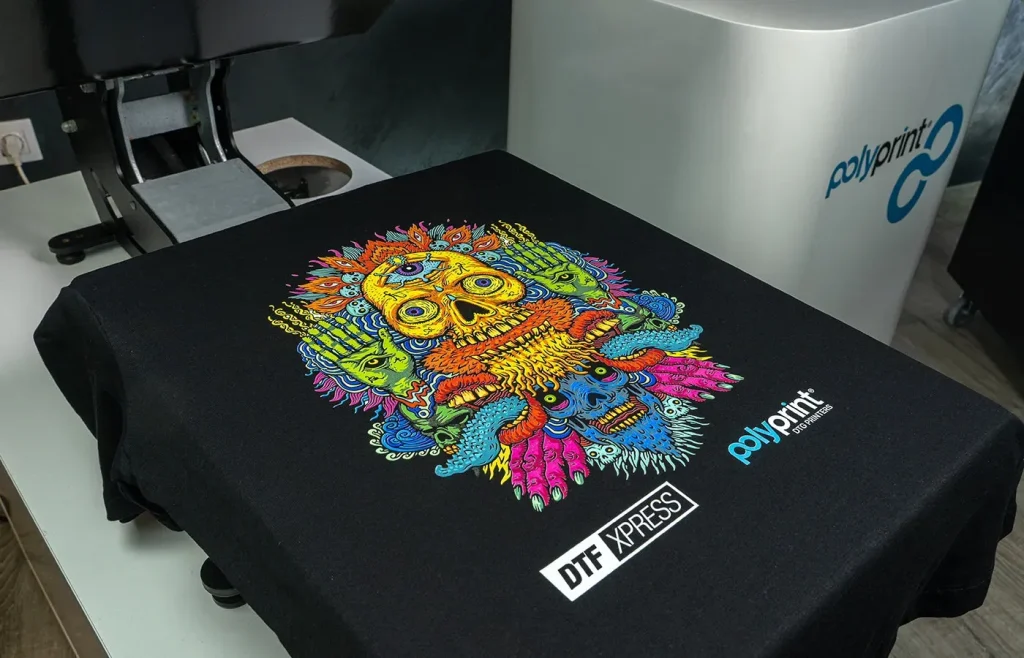DTF printing, or Direct-to-Film printing, is revolutionizing the textile printing industry with its ability to produce stunningly detailed designs and vibrant colors. This innovative method allows garment makers to apply intricate graphics to a range of fabrics, making it an increasingly popular option for both custom apparel and promotional merchandise. In this blog post, we’ll explore various benefits of DTF printing, from its versatility across materials to high-quality results that sustain the test of time. We will also dive into best practices for optimizing DTF printing techniques, ensuring that you achieve the best possible results with every project. Whether you’re a seasoned printer or just starting out, understanding DTF printing can enhance your capabilities and appeal to eco-conscious consumers.
Also known as Direct-to-Film printing, this emerging technology offers an exciting alternative to traditional garment decoration methods. By utilizing specialized film and heat transfer techniques, DTF allows for beautiful prints on a variety of textile materials, including popular fabrics like cotton and polyester. As we navigate through the numerous advantages associated with this printing method, you’ll discover how the eco-friendly aspects of DTF printing appeal to environmentally minded businesses and consumers alike. With a commitment to implementing best practices in the process, those involved in garment production can maximize efficiency while delivering top-quality goods. Join us as we unpack the essentials of DTF printing and why it is becoming a preferred choice in the industry.
Understanding DTF Printing Techniques
Direct-to-Film (DTF) printing is a revolutionary approach that combines digital printing and heat transfer methods to create stunning designs on fabric. This technique involves printing designs onto a special film, which is then used to transfer those designs onto various types of textiles. The key to DTF printing’s appeal lies in its ability to produce high-resolution images with vivid colors and intricate details, making it suitable for everything from custom clothing to promotional items.
Moreover, the versatile DTF printing technology allows it to be used on a wide range of materials, such as cotton, polyester, and mixed fabrics. This adaptability enables businesses to cater to diverse customer needs, from sportswear to fashion apparel. By employing the latest DTF printing equipment and techniques, print shops can ensure consistent quality and efficiency, contributing to a more productive workflow.
Benefits of DTF Printing Explained
One of the foremost benefits of DTF printing is its versatility. Unlike traditional printing methods, DTF allows printing on various fabrics, including dark and light textiles. This means businesses can expand their product offerings without being restricted to specific materials. Additionally, DTF printing provides high-quality results with vibrant colors that are resistant to wear and fading. This longevity is crucial for garments that are subjected to multiple washes.
Another significant advantage is cost-effectiveness, especially for small to medium-sized businesses. DTF printing does not require the extensive setup associated with screen printing. As a result, businesses can produce smaller orders at a lower cost without compromising the quality of the prints. This is particularly beneficial for creating customized apparel or limited edition products.
Eco-Friendly Aspects of DTF Printing
With an ever-increasing consumer focus on sustainability, DTF printing emerges as a more environmentally friendly alternative to traditional methods. Many DTF inks are water-based, minimizing the volume of harmful solvents released into the environment. This characteristic positions DTF printing favorably within the context of the growing demand for eco-friendly practices in textile production.
Moreover, by implementing sustainable practices, such as using biodegradable films and energy-efficient machinery, businesses can further enhance their environmental responsibility. Adopting eco-friendly DTF printing solutions not only meets consumer demands for sustainable products but also helps companies differentiate themselves in a competitive market.
Best Practices for Successful DTF Printing
To achieve optimal results in DTF printing, it is essential to follow best practices that guarantee quality outputs. One of the most critical steps involves selecting the right transfer films that are compatible with the printer inks used. Choosing high-quality transfer films enhances the durability and adhesion of the prints, ensuring long-lasting results.
Another vital practice is calibrating heat transfer settings according to the fabric type. Each material requires specific temperature and pressure settings for effective adhesion, and mismanagement of these settings can lead to peeling or fading designs. Regular testing of the press settings and conducting test runs are recommended to ensure successful outcomes.
Innovations in DTF Printing Technology
The DTF printing industry is dynamic, witnessing continuous advancements that optimize performance and print quality. Recent innovations include improvements in ink formulations that enhance color vibrancy and decrease drying times, enabling faster production cycles. These developments are critical for businesses looking to meet increasing consumer demand without sacrificing quality.
Furthermore, manufacturers are focusing on developing eco-friendly inks and advanced printing equipment that are energy-efficient. This not only helps reduce operational costs but also aligns with global initiatives toward sustainability. Keeping abreast of these technological advancements can provide businesses with a competitive edge.
Common Challenges in DTF Printing and Solutions
While DTF printing offers numerous benefits, it also presents challenges that can impact production quality. One common issue is ink clogging, which can occur if the printers are not maintained adequately. Regular cleaning and maintenance of the printing heads and nozzles are essential to avoid this problem and ensure consistent print quality.
Additionally, businesses may face challenges with color matching or design precision during the transfer process. Conducting test prints and adjusting the settings accordingly can help mitigate these issues. Investing in training for staff on DTF printing techniques can further enhance output quality and operational efficiency.
Frequently Asked Questions
What is DTF printing and how does it work?
DTF printing, or Direct-to-Film printing, is a modern printing technique that transfers designs onto fabric using a special film. The process involves printing the design on a film, which is then adhered to the garment using heat and pressure. This method allows for high detail and vibrant colors on various types of fabrics, making it versatile for clothing and promotional items.
What are the main benefits of DTF printing for garment makers?
The benefits of DTF printing include its versatility across different fabric types, high-quality and long-lasting prints, cost-effectiveness for short runs, and reduced equipment investment compared to traditional methods. Additionally, eco-friendly DTF inks are available, aligning with sustainability trends in the textile industry, making it an attractive option for garment makers.
What are some best practices for successful DTF printing?
To achieve the best results in DTF printing, follow these best practices: choose high-quality transfer films that match your inks, calibrate heat transfer settings based on material type, maintain your equipment regularly to ensure optimal performance, conduct test prints to catch issues early, and keep informed about the latest technology in DTF printing.
How does DTF printing compare to traditional screen printing?
DTF printing offers several advantages over traditional screen printing, particularly for smaller jobs. DTF printing is more cost-effective for short runs and does not require extensive setup, allowing for customization and flexibility. Unlike screen printing, which may be limited to certain fabric types, DTF can print on a variety of materials, including cotton, polyester, and blends.
Is DTF printing environmentally friendly?
Yes, many DTF printing inks are water-based and less harmful to the environment compared to traditional solvent-based inks. As eco-friendly practices gain importance in the textile industry, DTF printing aligns well with sustainable initiatives, offering options that meet consumer demands for greener printing methods.
What advancements are currently being made in DTF printing technology?
Recent advancements in DTF printing include faster printing speeds, improved ink formulations, and eco-friendly innovations like biodegradable films. As the industry evolves, manufacturers are focusing on enhancing efficiency and reducing waste in the printing process, aligning with sustainability goals.
| Key Points | Details |
|---|---|
| What is DTF Printing? | A technique that prints designs on a special film which is then heat transferred onto fabrics such as cotton and polyester. |
| Benefits | 1. Versatility with various fabrics. 2. High-quality, long-lasting prints. 3. Cost-effective for small runs. 4. Requires less equipment investment. 5. Eco-friendly ink options available. |
| Best Practices | 1. Use high-quality transfer films. 2. Calibrate heat transfer settings accurately. 3. Maintain printing equipment regularly. 4. Conduct test prints before production. 5. Stay updated with technological advancements. |
| Recent Developments | Advancements in speed, efficiency, and eco-friendly materials are shaping the future of DTF printing making it more sustainable and consumer-focused. |
Summary
DTF printing is revolutionizing the textile industry with its impressive capabilities and benefits. This advanced printing method not only allows for vibrant and detailed designs but also caters to a variety of fabrics, making it ideal for a wide range of applications—from clothing to promotional items. The inclusion of eco-friendly inks further enhances its appeal, aligning with the sustainability trends in consumer preferences. For businesses seeking to optimize their production while delivering high-quality products, embracing DTF printing is a strategic move that promises significant advantages in quality, cost-efficiency, and environmental responsibility.



